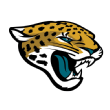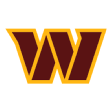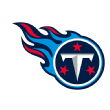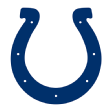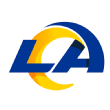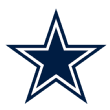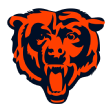Trout's the greatest through age 26. Is he destined to be best ever?
We've known the Golden Rule of Free Agency for a long time now. It's a lesson that, given the collective hot stove behavior over the past two winters, seems to have taken root in front offices across baseball. The GRFA is simply this: Pay for what you're going to get, not for what has already been done. The tricky part of this truism is that in sports, past behavior can be highly suggestive of what is going to happen. That's what projections are all about.
When the Los Angeles Angels agreed to a 12-year, $430 million extension with Mike Trout, it was a no-brainer from the team's standpoint. The game's best player will now almost certainly be a career Angel and would eventually add his name to the exclusive list of one-team Hall of Famers. The Angels are now the franchise of Mike Trout and it might be that way for generations.
Is Trout worth $430 million? Did he deserve it? The language at times like this tends to be fairly loaded, as we lose perspective in our fantasy world of sports fandom. Sure, Trout undoubtedly deserves the money. He is absolutely worth the commitment the Angels have made to him. But these statements are true only in the context of the inflated economics of professional sports. Given some of the rhetoric on both the players' and owners' sides over the winter, it's important to maintain some perspective.
On the baseball front, there are two key questions: Have the Angels violated the Golden Rule of Free Agency? And what does Trout have to do to end up as what he seems to be on pace to become: recognized as the consensus best player of all time. The questions are completely intertwined.
You don't realize how many sportswriters have mastered the use of Baseball-Reference.com's Play Index until times like this. Over and over, we've seen this tidbit, and for good reason: Trout's 64.3 bWAR is the highest total for any position player in history through the age of 26. (If we include pitchers, and limit ourselves to the modern era, pitcher Walter Johnson actually ranks higher.) That tidbit is usually followed by pointing out that Trout ranks just ahead of Ty Cobb and Mickey Mantle by this criterion, making the point that Trout indeed stands with the game's legends, perhaps above them.
Let's look at the top 10 position players by bWAR through age 26:
1. Mike Trout (64.3)
2. Ty Cobb (63.4)
3. Mickey Mantle (61.4)
4. Rogers Hornsby (56.9)
5. Alex Rodriguez (55.2)
6. Jimmie Foxx (54.2)
7. Mel Ott (51.3)
8. Ken Griffey Jr. (50.0)
9. Tris Speaker (48.7)
10. Arky Vaughan (48.0)
Yeah, that's a pretty good list to be on, much less be on the top of. They are all Hall of Famers except for Rodriguez, who deserves to be there but isn't yet eligible. But it also doesn't look quite like the list of top 10 position players by career bWAR, with no age cutoff:
CAREER bWAR
>1. Barry Bonds (162.8)
>2. Babe Ruth (162.1)
>3. Willie Mays (156.4)
4. Ty Cobb (151.0)
>5. Hank Aaron (143.0)
6. Tris Speaker (134.1)
>7. Honus Wagner (130.9)
>8. Stan Musial (128.2)
9. Rogers Hornsby (127.0)
>10. Eddie Collins (124.0)
NOTE: > denotes players not in top 10 through age 26.
Only three of the six non-Trout leaders through age 26 ended up in the top 10. More than that, look at the career totals of Bonds, Ruth, Mays et al. Bonds finished nearly 100 bWAR ahead of where Trout is now. For all the historically elite work Trout has done thus far, he has lots and lots of work to do to maintain his current standing. One final list before we dig in for possible portents:
bWAR AFTER AGE 26
1. Barry Bonds (121.6)
2. Babe Ruth (118.1)
3. Willie Mays (115.6)
4. Honus Wagner (113.7)
5. Hank Aaron (96.4)
6. Stan Musial (90.9)
7. Ted Williams (88.9)
8. Ty Cobb (87.6)
9. Tris Speaker (85.4)
10. Nap Lajoie (81.4)
The after-26 list looks a lot more like the list of overall best ever than the list of through-26 dominators. All of them excelled well into their 30s, something Trout is going to have to do to eventually stand alone. Will he? Can he? We can't know those answers with any degree of certainty. What we can do is see what characteristics he shares with those who have maintained their excellence that long, and also with those who tailed off.
Of the top 50 in all-time bWAR by age 26, four are active, including Trout, Mookie Betts, Manny Machado and ... wait for it .... Jason Heyward. We will omit the three active players from the Trout comparison, leaving us with 46 players for comparison. For each of those, I calculated a similarity score between them and Trout. I did not use a positional adjustment and focused only on seasons completed by age 26.
The four most similar players to Trout all had scores of 900 or better: Frank Robinson (965), Ken Griffey Jr. (941), Mickey Mantle (938) and Hank Aaron (913). The names are all legendary, but this is actually a mixed bag for Trout. The best case is Aaron, whose eventual career bWAR was 3.07 times that of his age-26 total. Robinson was at 2.32. However, Mantle (1.80) and Griffey (1.68) actually tailed off in their 30s as their athleticism declined because of age and injuries. Mantle retired at 36, an age at which Trout would still have two years remaining on the extension he just signed. The average for the group was a career bWAR of 2.22 times that of the age-26 total.
That figure (2.22) would leave Trout at 142.7 for his career, which would rank sixth all-time. If he follows Aaron's path, he ends up with 197.4, a total that would clearly leave Trout universally acclaimed as the best player ever. Let's compare Trout and Aaron, through age 26:
Mike Trout vs. Hank Aaron
Player bWAR Years G AB R H HR RBI BB SO SB BA OBP SLG
Trout 64.3 2011-18 1065 3870 793 1187 240 648 693 998 189 .307 .416 .573
Aaron 46.6 1954-60 1039 4114 714 1309 219 743 341 378 36 .318 .369 .560
Trout is off to a faster start, but Hank Aaron became Hank Aaron because of how long he was great, not just because he was great. Both were .300 hitters by age 26, though Aaron put the ball in play far more frequently. Of course, eras have a lot to do with this. In any event, this is the path Trout wants to pursue. Aaron had a 4-win season at age 39. If Trout is doing that, there will be no arguments about Trout vs. Bonds or Trout vs. Ruth. We'll just be arguing about who is No. 2.
There were 17 players with a similarity score between 800 and 900 when compared to Trout. These players are somewhat similar, but not as similar as the previous quartet, so presumably their paths are less telling. Listing them all in order from most similar to least: Eddie Mathews (897), Alex Rodriguez (890), Mel Ott, Albert Pujols, Andruw Jones, Jimmie Foxx, Al Kaline, Vada Pinson, Joe DiMaggio, Johnny Bench, Ron Santo, Willie Mays, Cal Ripken Jr., Cesar Cedeno, Joe Medwick, Lou Gehrig, Rogers Hornsby.
I listed the scores for Mathews and A-Rod because they were not far off the 900 cutoff. Plus Rodriguez joined Trout in the top 10 players through 26. Let's compare those three:
Mike Trout vs. Eddie Mathews and Alex Rodriguez
Player bWAR Years G AB R H HR RBI BB SO SB BA OBP SLG
Trout 64.3 2011-18 1065 3870 793 1187 240 648 693 998 189 .307 .416 .573
Mathews 45.5 1952-58 1029 3752 703 1039 253 663 646 607 34 .277 .382 .541
Rodriguez 55.2 1994-02 1114 4382 885 1354 298 872 472 869 160 .309 .380 .579
What jumps out is just how complete Trout is as a player, even compared to these all-time fast starters. Rodriguez had more homers but still held only a 6-point edge in slugging percentage. Rodriguez was known for his elite homers-steals combination early in his career, but Trout has quite a few more steals and nearly three times as many triples. Mathews walked as often as Trout, but has a 30-point deficit in average. Basically, Trout is what you'd have if you combined the early careers of A-Rod and Eddie Mathews. Mathews eventually increased his bWAR total by 2.12 times his age-26 mark, nearly identical to what A-Rod did (2.13). That pace would leave Trout around 136.9 career bWAR, which would leave him sixth on the career list.
As for the other 25 players in the comparison, all had similarity scores under 800, so they are all pretty different from Trout. Those 25 players ended up increasing their age-26 bWAR totals by 2.28 times. The range was large, from 3.94 (Bonds) to 1.31 (John McGraw), but the similarity scores are low enough that we can discount them in comparison to Trout.
All of this assumes that Trout remains healthy, of course. But with that caveat aside, we can see from these comparisons that even when you're looking at the best career starts in all of baseball's history, the face of the Angels is largely incomparable. To end up ahead of Bonds on the career position-player list, Trout would need to stay on a trajectory somewhere between Aaron and Robinson. That will be incredibly difficult to do, as you'd expect in the quest to become the best player of all time.
But it seems likely that whether Trout takes the Aaron/Robinson path, or that of Griffey/Mantle, he's going to at the very least end up as an upper-tier Hall of Famer. And when your floor is Alex Rodriguez or Eddie Mathews ... yeah, even at $430 million of 21st-century money, you're worth it.
MORE BEST EVER?
As good as Trout is, he's not the best home run hitter in the game, perhaps because he's so busy doing so many other things. Don't take that the wrong way -- Trout is a great home run hitter, one of the best ever. Given his consistency and likely duration of excellence, he's a threat to hit 600-700 dingers. Maybe more. However, there are other active players who have homered more frequently on a per-rata basis. In fact, there are a handful of bombers who might eventually emerge as the game's best-ever home run hitter, at least on a percentage basis.
The most likely player to achieve that honor is Giancarlo Stanton, who has a prodigious early-career homer pace. He's through only his age-28 season, but already ranks 22nd in homers by age 30, tied with Vladimir Guerrero (305). The all-time leader in this category is A-Rod, with an amazing 464, 26 more than Ken Griffey Jr.
However, we also have to consider how many games Stanton missed because of injuries before he finally put it all together in his 59-homer season in 2017. He has played 159 and 158 games the past two seasons, respectively, so it seems his luck has turned. Let's imagine what Stanton's homer total might look like had he played 150 games per season from 2011, the year after he broke into the majors, through 2016. That would have given him an additional 173 games played on his career ledger.
During those seasons, Stanton averaged .256 homers per game. At that pace, he could have hit an additional 44 homers, bringing his total through age 28 to 349. That would be the third-highest ever through 28, behind A-Rod (381) and Griffey (350). Over the past two seasons, Stanton has upped his pace to .306 homers per game. If he keeps that up and keeps playing 158-plus games, by the time he's through his age-30 season, Stanton would already be at 402 career homers. That would put him sixth through age 30 behind A-Rod, Griffey, Jimmie Foxx, Albert Pujols and Mantle.
Forgetting about any age cutoff, for all players with at least 4,000 career plate appearances, Stanton ranks third with 6.32 homers per 100 plate appearances, behind Mark McGwire (7.61) and Babe Ruth (6.73). Based on that, there really is a non-zero chance that Stanton ends up as the most prolific homer hitter of all time, at least before you start dragging in ballpark and league-context considerations.
But the crazy thing about this: If you lower the career threshold to a minimum of 1,200 plate appearances, that pushes Stanton's ranking in HR/100 PA down to fifth. That's because there are two active players homering at an even more rapid pace than Stanton. Plus, there's another slugger right on his heels. Joey Gallo (6.97) has a higher HR/100PA than Ruth, trailing only McGwire, while Stanton teammate Aaron Judge (6.53) ranks fourth all-time. Right behind Stanton is Khris Davis (6.31). And there is one other active active player in the top 25, at that 1,200 minimum -- the Cubs' Kyle Schwarber (5.65).
None of these players is likely to usurp Trout's place as the game's best player, at least not anytime soon. (One of the few who could do it eventually is Judge.) Nevertheless, if homers are your thing, some of the best-ever long ball threats are in the game right now.







